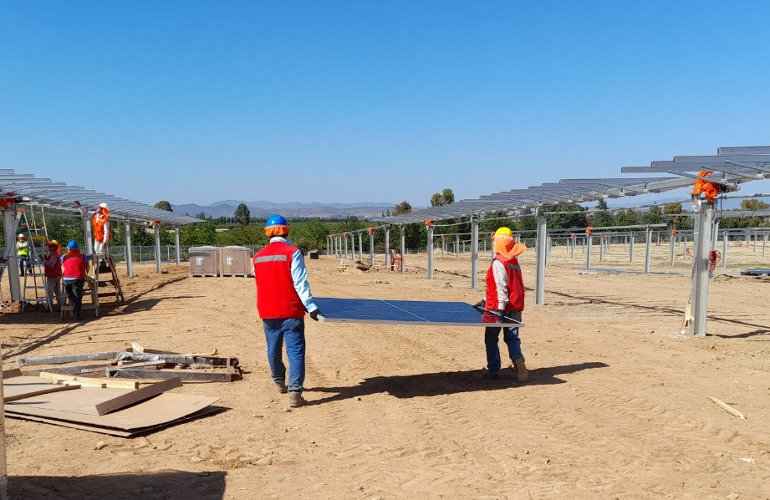Significant Tariffs On Southeast Asian Solar Imports: US Duty Hikes Explained

Table of Contents
The Investigation Leading to Increased Tariffs
The imposition of these increased tariffs follows investigations into allegations of circumvention and dumping by Southeast Asian solar manufacturers.
Allegations of Circumvention and Dumping
Circumvention, in this context, refers to the practice of evading existing tariffs by altering the production process or sourcing components to appear as if they originate from a country not subject to the same duties. Dumping involves selling goods in a foreign market at prices significantly below their production cost or domestic market price, often to gain market share and undermine domestic competitors.
- Alleged Circumvention: Southeast Asian manufacturers were allegedly circumventing existing tariffs on Chinese solar products by assembling panels in their countries using components sourced from China, thus masking the origin.
- Alleged Dumping: Evidence presented suggested that Southeast Asian solar manufacturers were selling their products in the US market at prices below their fair market value, causing material injury to the domestic solar industry.
- Countries Involved: The investigation focused primarily on Vietnam, Cambodia, Malaysia, and Thailand, major exporters of solar panels and components to the US.
The Role of the Commerce Department and the International Trade Commission (ITC)
The US Department of Commerce (DOC) and the International Trade Commission (ITC) conducted parallel investigations. The DOC determined whether dumping and circumvention occurred, calculating the appropriate duty rates, while the ITC investigated whether the US solar industry had suffered material injury.
- Timelines: The investigations spanned several months, involving detailed analysis of financial data, production processes, and trade patterns.
- Key Findings: Both the DOC and ITC reports concluded that there was sufficient evidence to support the allegations of circumvention and dumping, leading to the imposition of significant anti-dumping and countervailing duties.
The Magnitude of the Tariffs and Their Potential Impact
The new tariffs represent a substantial increase in the cost of importing solar panels and components from Southeast Asia.
Specific Tariff Rates
The specific tariff rates vary depending on the country of origin and the type of product. For instance:
| Country | Solar Panels (%) | Solar Cells (%) | Other Components (%) |
|---|---|---|---|
| Vietnam | 250 | 150 | 100 |
| Cambodia | 230 | 140 | 90 |
| Malaysia | 210 | 120 | 80 |
| Thailand | 180 | 100 | 70 |
Note: These are illustrative figures and the actual rates may vary slightly depending on the specific product and importer.
Economic Consequences for the US Solar Industry
These tariffs present a mixed bag for the US solar industry.
- Potential Job Creation: The tariffs could stimulate domestic solar panel manufacturing, potentially creating jobs in the US.
- Potential Price Increases: Increased costs due to tariffs will likely lead to higher prices for consumers, potentially slowing the adoption of solar energy.
- Impact on Growth: The long-term impact on the growth of the US solar sector remains uncertain, with potential for both acceleration and deceleration depending on the market's response to higher prices.
Geopolitical Implications
The tariff increases add another layer of complexity to US relations with Southeast Asian nations. It could strain trade relationships and potentially impact future collaborations on energy and climate change initiatives. Furthermore, these actions could disrupt global supply chains and lead to a search for alternative solar component suppliers.
Potential Challenges and Future Outlook
The increased tariffs are unlikely to be the final chapter in this story.
Legal Challenges to the Tariffs
Southeast Asian solar manufacturers and US importers may challenge the tariffs in court, arguing that the investigations were flawed or that the imposed duties are excessive.
Long-Term Effects on the Solar Energy Market
The long-term effects on the solar energy market are difficult to predict.
- Alternatives to Southeast Asian Imports: The industry might seek alternative sources of solar panels and components, potentially from other countries or through increased domestic manufacturing.
- Future Tariff Adjustments: The tariffs may be adjusted in the future based on ongoing monitoring of the market and any new developments in the investigation.
Conclusion: Navigating the Complex Landscape of US Solar Tariffs
The significant increase in tariffs on Southeast Asian solar imports represents a major development with complex economic and geopolitical ramifications for the US solar industry and global energy markets. The higher prices brought about by these US duty hikes on Southeast Asian solar imports will undoubtedly affect consumers and the overall growth of renewable energy adoption in the US. The legal challenges and potential shifts in global supply chains will continue to shape the landscape of solar energy in the coming years. Staying informed about developments related to solar tariffs and their impact on the US solar energy market is crucial. We encourage you to share your thoughts on these developments in the comments below, and to further your research by exploring resources on anti-dumping laws and international trade policy.

Featured Posts
-
 Arcelor Mittal En Russie Le 9 Mai 2025 Analyse De L Emission Franceinfo
May 30, 2025
Arcelor Mittal En Russie Le 9 Mai 2025 Analyse De L Emission Franceinfo
May 30, 2025 -
 Gorillaz House Of Kong Exhibition Dates Tickets And What To Expect At Londons Copper Box Arena
May 30, 2025
Gorillaz House Of Kong Exhibition Dates Tickets And What To Expect At Londons Copper Box Arena
May 30, 2025 -
 Jon Jones Mocks Rival Tom Aspinall Amidst Continued Absence
May 30, 2025
Jon Jones Mocks Rival Tom Aspinall Amidst Continued Absence
May 30, 2025 -
 Odigos Tiletheasis Gia Tin Kyriaki 11 5
May 30, 2025
Odigos Tiletheasis Gia Tin Kyriaki 11 5
May 30, 2025 -
 Ulasan Kawasaki Ninja 500 Dan 500 Se 2025 Harga Fitur Dan Spesifikasi
May 30, 2025
Ulasan Kawasaki Ninja 500 Dan 500 Se 2025 Harga Fitur Dan Spesifikasi
May 30, 2025
